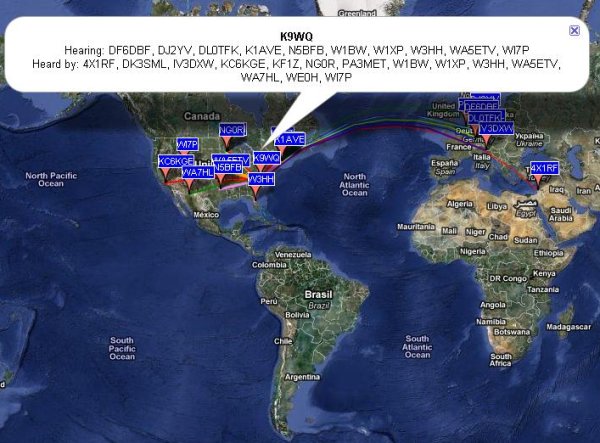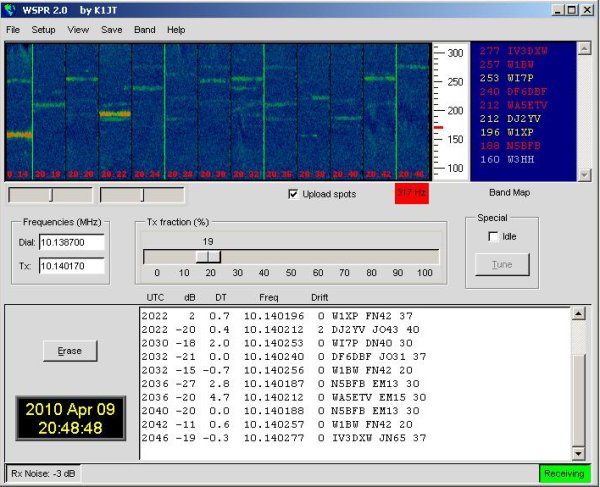
The map shows the locations of the stations whose beacons I heard (or who heard mine) Friday afternoon.
National Public Radio had a story this week on how ham radio is growing in the age of Twitter. Not only is ham radio very much alive, hams are always figuring out new things to do with radio and computers.
I recently discovered a new digital communications mode invented by hams called WSPR — Weak Signal Propagation Reporter. The idea is to have a computer-controlled radio listen for (and transmit) low-power digital beacons on certain frequencies. The power could be as low as 1 watt. But because the data carried on this signal is intentionally transmitted at such a slow speed, the signal is very reliable, even a weak signal in the presence of noise. It takes almost two minutes to transmit only enough data to give the identity of the transmitting station, its location, and the amount of power used. Error correction is used to make copying the signal more reliable. So a tiny amount of power goes a long way.
The computer completely automates the process, listening and periodically transmitting. Every two minutes, it tells you whose beacons you heard. The computer also uploads this list of who it heard to a web site where all the data is collected. On this web site, you can see a map that shows who can hear whom all over the world.
Modern ham radios, by the way, have interfaces that allow them to be controlled by computers. Computer programs also can create audio to send to the transmitter, and interpret audio from the receiver. This is how computers encode and deocode digital signals that are transmitted as sound on the radio.
Using 3 watts of power, my beacon was heard from New England to California. I raised the power to 30 watts for only two beacon transmissions, and I was heard across the Atlantic, by DK3SML in Germany; G8BKE in England; IV3DXW in Italy; PA3MET in the Netherlands; and 4X1RF in Israel. This was on a frequency of 10.140 Mhz.
Some hams like to work with big antennas on tall towers, and power amplifiers. I find it more challenging (not to mention less expensive) to limit myself to 100 watts and only such antennas as I can hide in my attic. California on 3 watts and Israel on 30 watts — not bad.
Part of what’s fascinating about WSPR mode is that it’s an easy way to test your radio, your antenna, and radio propagation conditions. Leave the computer and radio alone for an hour or two to transmit and receive beacons, then have a look at the list of who heard whom. It answers the question “How far can my signal be heard?”

The program which controls sending and receiving low-power beacons
